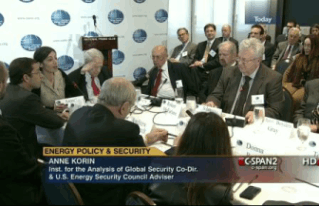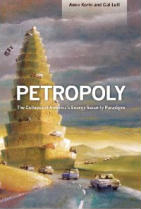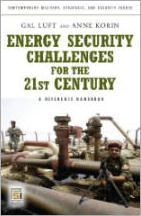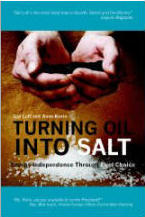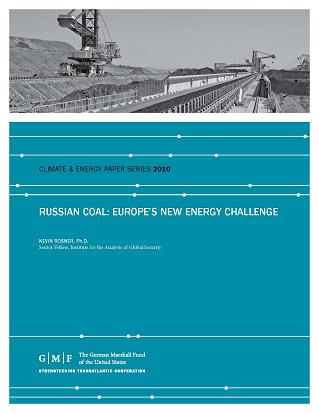
In October of 1973, Arab oil producing nations imposed an oil embargo on the United States because of its support of Israel after unexpected attacks by Egypt and Syria. Since some effects of the embargo could be offset by juggling deliveries to the importing countries, the boycott also included a production cut of 20 percent -- the real guts of the “the oil weapon.”
The boycott came as a shock to American drivers who had little awareness of their growing dependence on oil from the volatile Persian Gulf and who by early in 1974 faced fuel shortages and gasoline lines around the country. Thirty-five years later, the Arab oil embargo is still regarded as a major milestone in U.S. energy history.
With the embargo now a distant memory for many, we are still learning more about its lessons for America’s current dependence on foreign oil. Much of our new information comes from documents declassified in recent years and discussed in my new book "A Declaration of Energy Independence: How Freedom from Foreign Oil Can Improve National Security, Our Economy, and the Environment."
Before the embargo, U.S. oil policy rested on the miscalculation that Arab exporters couldn’t pressure the U.S. by reducing production, because they couldn’t afford the loss of revenue. President Nixon reflected such thinking, when asked at a September 1973 news conference about the possibility of Western oil companies being expropriated. “Oil without a market,” he declared confidently, “does not do a country much good.” He added that we would turn to alternative fuels if our supplies of oil were threatened.
The events of October 17 abruptly dashed U.S. expectations about the role of oil in the 11-day-old Middle East war. Meetings between Nixon, Secretary of State Kissinger, and Arab foreign ministers that morning convinced the Americans the Arabs wouldn’t cut off oil to the United States. Kissinger told the President the discussions had been “very successful,” because the foreign ministers “were happy.” Nixon, who’d feared an anti-Israel reaction, gloated over a tactical victory: “This meeting with the Arabs just about killed the damn press people. They expected all hell to blow up.” That turned out to be the very day that the embargo was agreed to.
In this context, a State Department cable on November 29 (declassified several years ago) from Saudi Arabia back to Washington carried an ominous message. The American ambassador reported that Saudi “oil production is down therefore preserving its reserves, yet its income is up.” In other words, the increased price per barrel of oil during the crisis more than compensated for losses from reduced production. The American assumption that a politically-motivated oil boycott would extract a heavy financial toll on producers was proving to be flat wrong.
In the early days of the oil embargo, the production cuts were offset by modest increases from non-Arab members of OPEC, including three majority Moslem countries (Iran, Nigeria, and Indonesia). However, a short cable to the U.S. State Department, dated December 4, carried the gloomy title “Arabs Reportedly Pressing for OPEC Production Limitation Scheme.”
The American ambassador in Caracas reported that according to sources in the Venezuelan government, non-Arab countries in OPEC were being pressured to cut their production by the Arab nations who’d organized the boycott. The move, scheduled for discussion later in the month, would be “be designed to create permanent mechanism through which OPEC members could keep prices high level following the end of boycott.” The communiqué warned that divorced from any political concerns the OPEC nations might limit production as a way of forcing up prices.
Despite the economic threat posed by a more activist cartel, the cable raised few red flags in Washington, and there was little effort to counter a strategy that might be as dangerous in the long run as the embargo. When OPEC implemented its new strategy at a public meeting in Tehran a few weeks later, it caught Kissinger totally by surprise. The U.S. ambassador in Riyadh cabled to headquarters: “OPEC is probably surprised at the helpless reaction from the consumers.”
OPEC limitations on production created a persistent “sellers’ market” in oil until its members overplayed their hand late in 1980. They ratcheted up prices yet again in the face of rising production in Alaska, Mexico, and the North Sea and falling consumption in the U.S., Europe, and Japan. Constraining OPEC production was no longer sufficient to exercise control over the world market. For a long period (roughly from 1982 to 1998), a buyers’ market prevailed in international petroleum, and OPEC’s control almost disappeared.
In 1999, OPEC took advantage of renewed discipline among its members and surging oil demand around the world to start the path back to power. For a long time, U.S. policymakers ignored escalating levels of imported oil and the implications of changes in the world market. The deniers of a dangerous oil dependency took comfort in the unlikelihood of a return to the gasoline lines of the 1970s due to the absence of the price-controls and government allocation of the earlier decade.
Although lines at service stations are less likely (but not impossible as Katrina proved in some of the Southeastern states), the greater danger remains the OPEC innovation discovered almost by accident during the 1973-74 interruption. A cartel can extract very high costs from importing nations if it carefully manages its exports. Today, even state-owned oil companies outside the OPEC umbrella demonstrate no rush to bring on the production needed to respond to rising demand around the world, thus pushing exploration and development to the most expensive frontiers.
Many pundits still deny this situation creates a major problem worth solving. Yet our negative trade balance in energy runs well over $1 billion a day, a sum much greater than the trade deficit with China or the costs of the wars in Iraq and Afghanistan. This impact from dependence on foreign oil constitutes a major piece of evidence -- but far from the only one -- that we are ignoring major risks by failing to heed the lessons of an energy crisis more than three decades ago.
Passage of the "Energy Independence and Security Act" and the start of a very lagged market response to skyrocketing prices last year suggest that the age of American oil complacency has ended. But we have been digging ourselves into a hole of dependency on foreign oil for a long time, and much work remains to dig ourselves out.
Jay Hakes is a former Administrator of the Energy Information Administration and the author of the recently released book "A Declaration of Energy Independence: How Freedom from Foreign Oil Can Improve National Security, Our Economy, and the Environment."








